Food waste accounts for 6.1% of greenhouse gas emissions in the United States, according to ReFED’s latest analysis. That’s equivalent to the emissions generated by 30% of U.S. passenger vehicle transportation. The connection between GHG emissions and food waste – and strong ties to methane emissions in particular – makes reducing food waste a top solution to slowing down climate change.
So where to begin?
Environmental impacts – such as GHG emissions, water usage, and more – are generated as food moves through the supply chain. For many food types, production is the most intensive stage of the process, and emissions add up at each stage of the supply chain. Prevention solutions are those that ensure that we consume all of the food we produce – and that we keep it out of landfills. By keeping more food in the supply chain, we reduce the need for more production and avoid the associated emissions.
Considering what we know about where and when emissions are happening in the food life cycle, we’ve compiled this list of five high-impact strategies (based on the Key Action Areas from ReFED's Roadmap to 2030), along with thirteen accompanying solutions to reduce food waste – and we've included a few honorable mentions as well:
1. Optimize the Harvest
Increasing opportunities for growers to sell more of what gets grown through processes like Partial Order Acceptance and Imperfect & Surplus Produce Channels is a key strategy to reducing food loss and waste at this stage in the supply chain. Imperfect or otherwise “out-of-spec” product is still high-quality and full of nutrition, and these practices provide flexibility to keep food in the supply chain. Note that these solutions require cross-industry collaboration, as both buyers and sellers must agree to adjust contracts and standards. Nonetheless, optimizing how we use what we harvest is the first step in slashing emissions upstream.
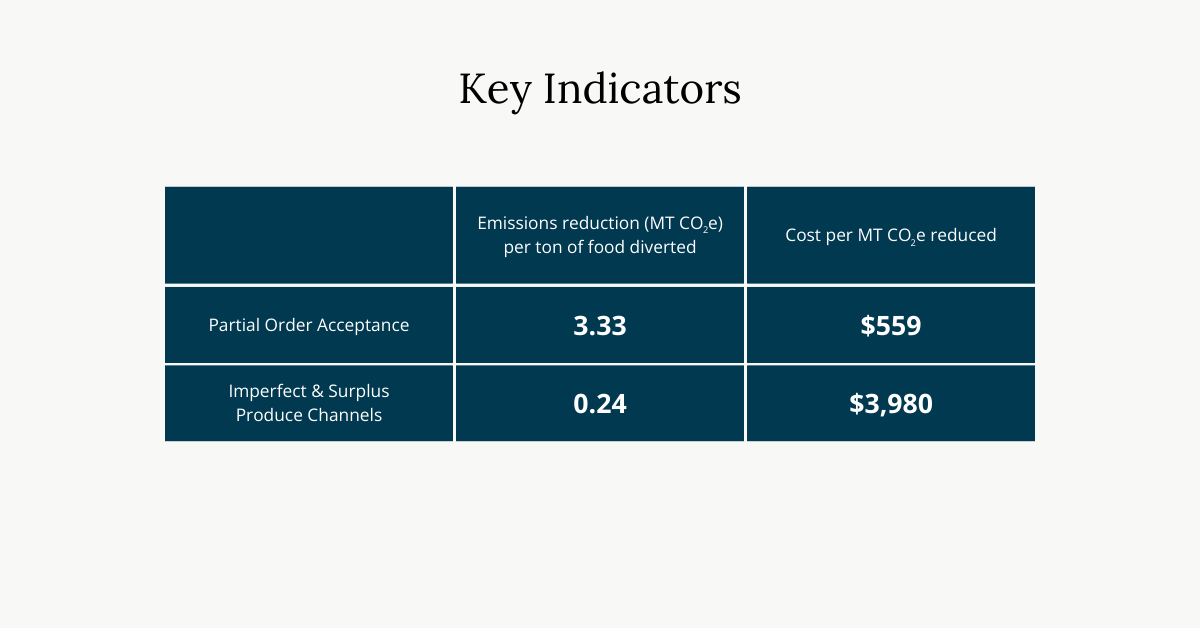
*Emissions “efficiency” and cost effectiveness can vary widely, even within a prevention category, depending on a multitude of factors. For example, a solution that addresses meat and dairy waste may have significant emissions reductions even if it only touches a small volume of food, due to the high emissions intensity of producing meat and dairy food items. Similarly, a solution that requires a significant upfront investment but addresses a huge volume of food may end up being quite cost effective. Both indicators may be of use to decision makers in weighing the tradeoffs between solutions they are hoping to implement.
2. Enhance Product Distribution
The shelf life of food can be enhanced by Decreasing Transit Time, Increasing Delivery Frequency, and Minimizing Onhand Inventory. These tactics can reduce the amount of time that food spends being transported, thereby reducing opportunities for spoilage and damage. They also ensure that what’s being distributed is as fresh as possible and will have the longest shelf life upon reaching consumers. While these practices may increase labor requirements, they provide opportunities for increased revenue and reduced costs of handling culled or rejected material in addition to the environmental impacts.
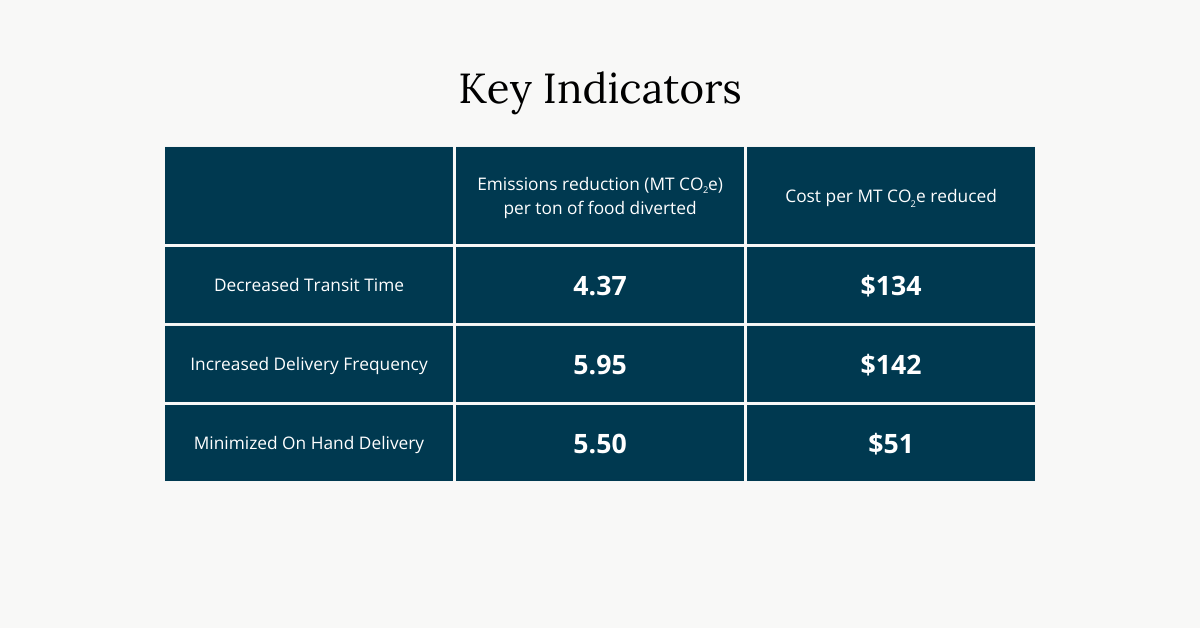
3. Refine Product Management
Inventory management practices like Temperature Monitoring in transit and First Expired First Out (FEFO) also reduce spoilage during transit or storage. While these practices can be particularly challenging for highly perishable items, there are opportunities to leverage technology-enabled solutions to monitor freshness and track waste rates. Complete cold chain monitoring and tracking from farm-to-fork requires data sharing and collaboration across industry players, strengthening the chance of preventing emissions in the first place.
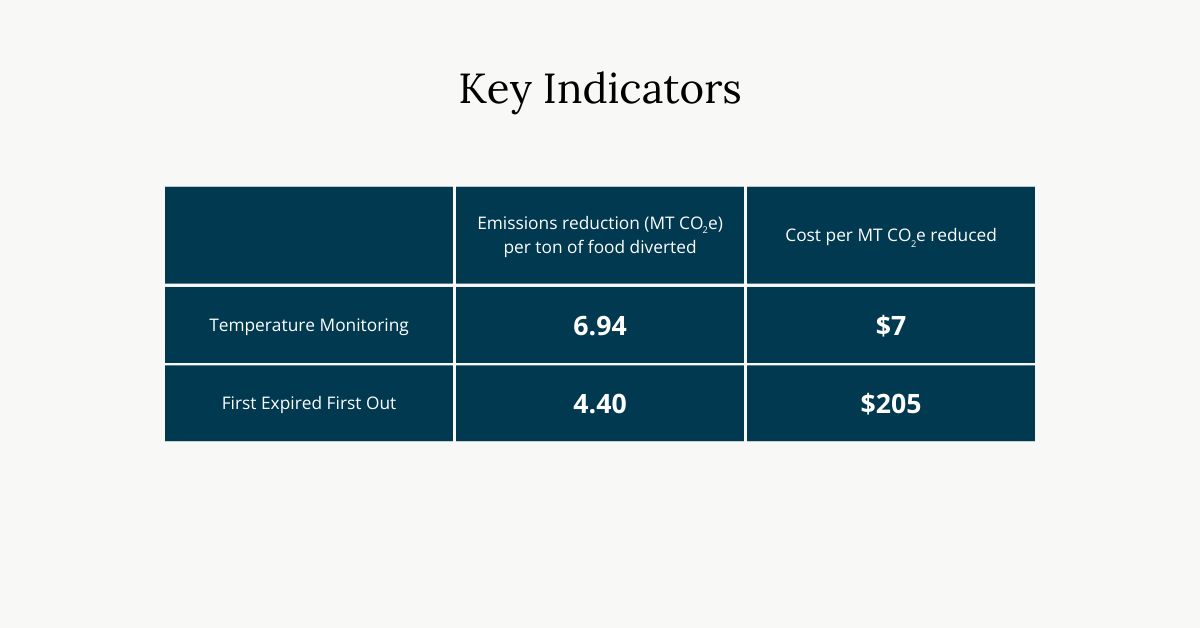
4. Maximize Product Utilization
Making the most of food that’s produced can be strengthened through Active and Intelligent Packaging, which directly combats causes of spoilage or alerts consumers to dwindling shelf life. Manufacturing Byproduct Utilization – or "Upcycling" – can return food to the human supply chain by transforming significant volumes of whole foods, scraps, and byproducts into value-added products. When paired with consumer education around eligibility and proper storage, these two solutions can make a significant difference to prevent food waste and reduce emissions.
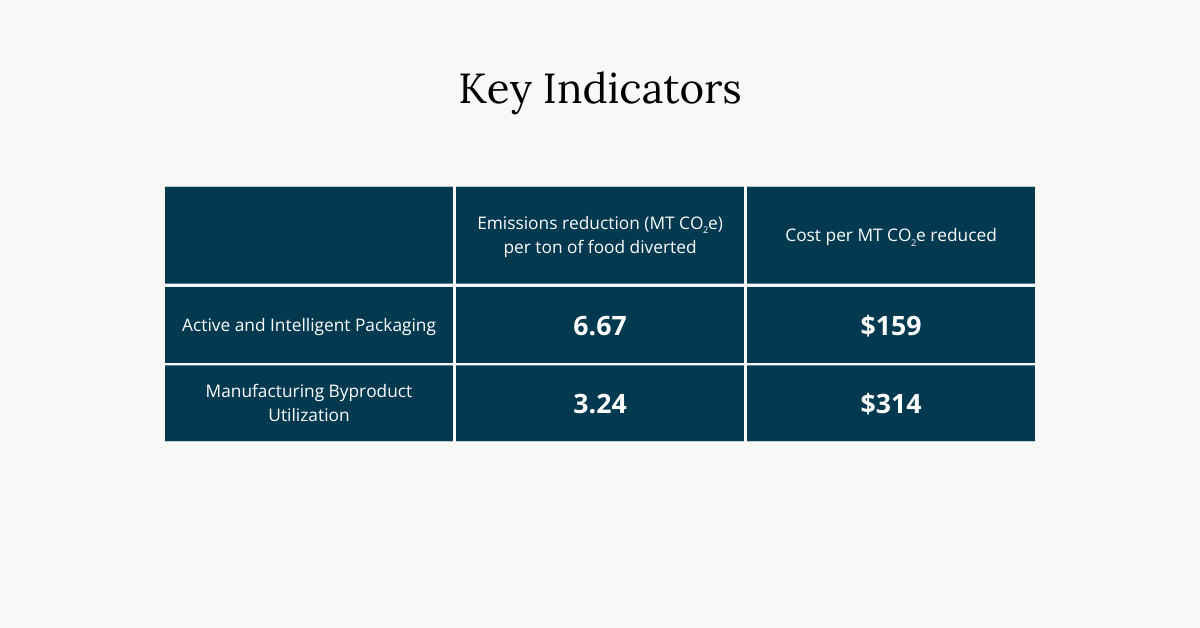
5. Reshape Consumer Environments
Consumer Education Campaigns and Standardized Date Labels are popular consumer-facing actions that will reduce a significant amount of waste. In addition to educating consumers on behaviors like proper leftover storage and trusting their senses to determine food spoilage, upstream solutions like optimizing Package Design and the eating experience through Portion Sizes can be implemented by food businesses to complement education campaigns and standardized date labeling. Because households are the sector that generates the most food waste, reshaping consumer environments is essential to successfully implementing upstream solutions.
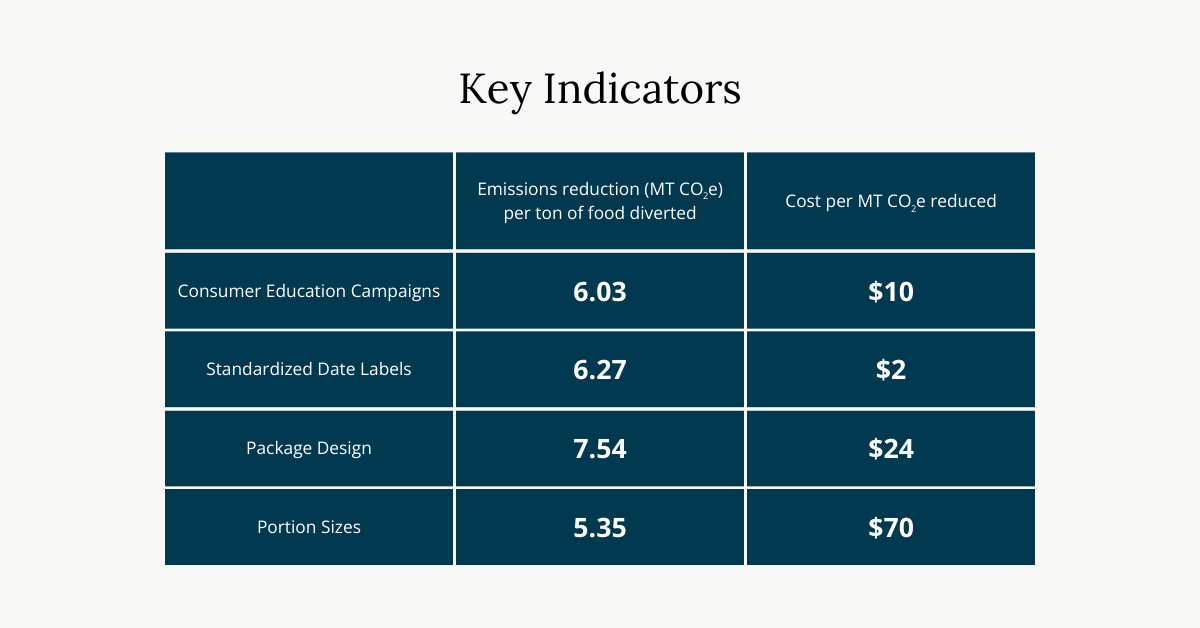
* Note that the average emissions reduction increases as the solution intervention point gets further along the supply chain. Because food accumulates embodied emissions, it becomes more and more important to keep food in the supply chain as it moves from sector to sector. That being said, interventions that take place further upstream likely have more opportunities to re-route food back into the human food supply.
Honorable Mentions: Rescue and Recycling Solutions
Donation solutions that rescue food from waste streams to feed hungry people and “recycling” solutions, like composting and anaerobic digestion (AD), are other ways to divert food waste from landfills. Recycling solutions promote a circular economy, and policymakers are often attracted to the ability of centralized facilities to handle a large volume of material. ReFED’s modeling of recycling solutions1 reflects that capacity by showing that compost and AD programs could keep 25 million tons of food out of landfill every year, avoiding 15 million tons of CO2e – that’s equivalent to taking over three million cars off the road.
While rescue and recycling solutions are a great option to reduce downstream emissions, maximizing the emissions reduction “bang for buck” requires a more holistic approach to the food supply chain. Looking at prevention solutions upstream allows us to prevent food from becoming waste in the first place.
The strategies mentioned here are the most effective in their category at reducing emissions, but all solutions modeled by ReFED (and more coming) play a role in making a difference. Explore the Solutions Database in ReFED’s Insights Engine to learn more.
1Centralized Anaerobic Digestion, Centralized Composting, Community Composting, Home Composting
